
21mm lenses were originally developed for the purpose of aerial photography during the 1930s. Using a 1946 Russian-patented design as a template, in 1954 Zeiss (West Germany) would introduce the first widely-produced 21mm lens for 35mm cameras.
The 21mm focal length remains a difficult medium to create compelling images. Although 21mm lenses certainly are capable of capturing plenty of context, “context” does not necessarily equal “compelling.”
21mms And Other Super Wides Are Not Real Substitutes for Perspective Control Lenses For Architecture and Landscapes. While it may seem counterintuitive, 21mm lenses actually not ideal for architecture unless you can level the lens with the subject, instead of “looking up” at the subject. When one “looks up” at a subject with a 21mm lens, a fair to great amount of vertical perspective distortion is created. Vertical perspective distortion is a combination of the focal length of the lens plus the angle of view. Because of inherent wide angle distortion, this is why “perspective control” tilt-shift lenses were developed — which for the most part are/were made in the 24-35mm focal length.
Some folks will tell you that you can use Photoshop to correct the distortion created by “looking up” at a subject. However, for this to work, you purposefully must include much more area around your subject or otherwise it will be cropped out. The less level the lens is, the more area will be cropped. Furthermore, while small tweaks are usually not a big deal, when you use software to radically correct distortion, you are really creating something that does not reflect reality and optics — the resulting image is not what the lens captured, not what your film/sensors recorded, and not what your eyes actually saw. Whether such things even matter anymore to anyone in the 21st century is another story.
Here is an example of a correction of a situation where the lens was not level to the subject.


21mm Lenses Can Be Really Effective When Used Extremely Close and Level to a Subject. In my opinion, 21mm lenses are really effective at getting really close and level to a subject. Not only can you isolate a close subject, much more background context can be captured than a traditional portrait lens.
Because longer lenses inherently has less vertical distortion when”looking up” (as the angle of the lens to the film/sensor plane is less extreme), a good rule of thumb is to try any wide shot with a 35mm or 28mm lens first, and only go wider if those focal lengths cannot capture the subject.
With all of that preface, in this piece, we are going to look at some old and new lenses that fairly exemplify the evolution of thought and design for 21mm lenses — the 1954 Zeiss Biogon 21mm f/4.5 (Contax rangefinder), the 1979 Yashica ML 21mm f/3.5 (C/Y), the 1979 Konica Hexanon 21mm f/2.8 (AR), the 2002 Konica M-Hexanon 21-35mm f/3.4-4 (Leica M), and the 2004 Zeiss Biogon 21mm f/4.5 (Leica M). The purpose of “testing” these lenses against each other is not to make any declarations about whether a lens is capable of delivering quality images, which is almost always an unresolvable debate, but to evaluate their strengths, weaknesses, and differences.
1954 Zeiss Biogon 21mm f/4.5
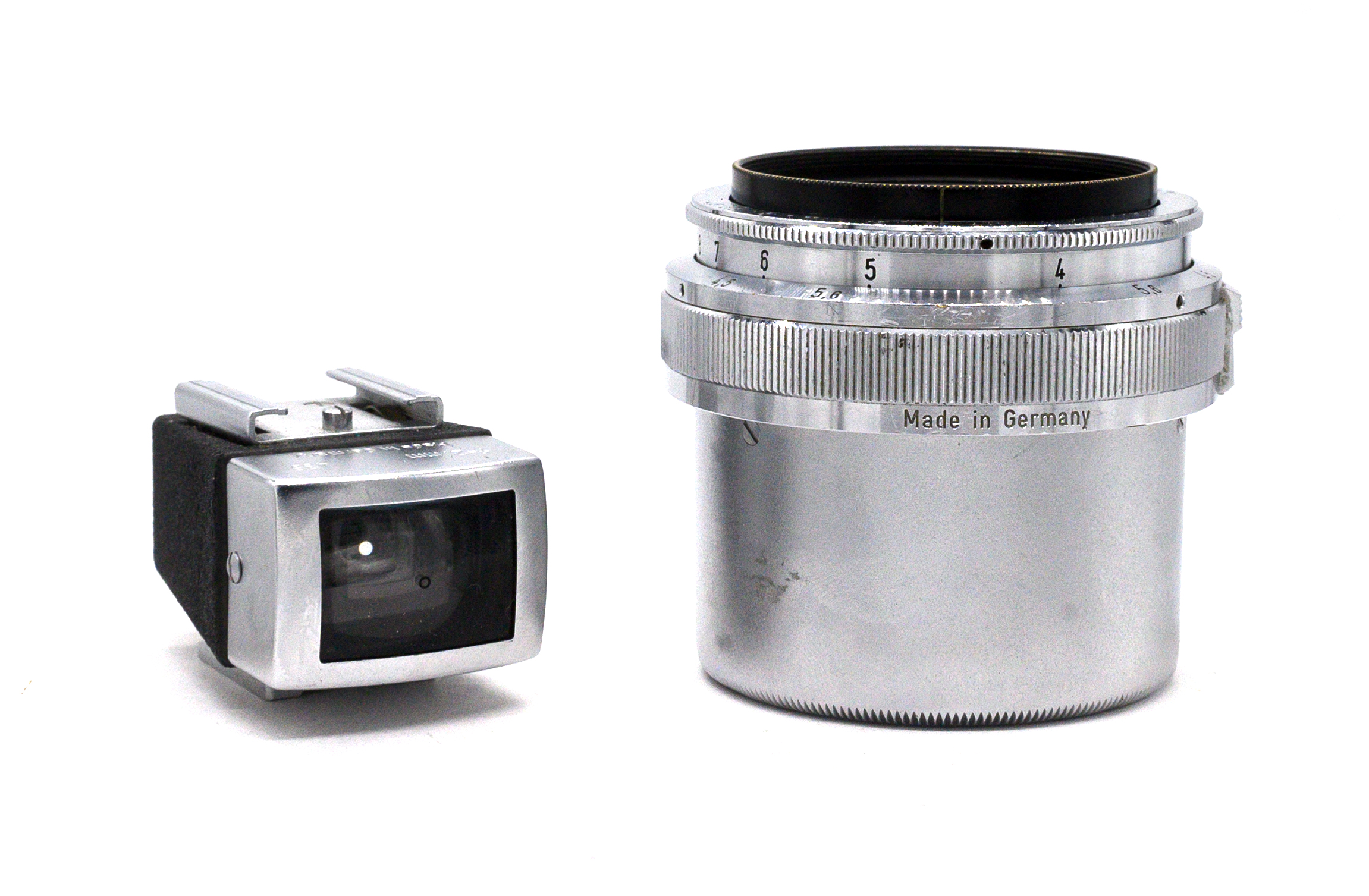
Specifications
Mount: Contax Rangefinder
Optical Design: 8 elements in 5 groups
Aperture: f/4.5 – f/22 continuous
Aperture Blades: 8
Minimum Focus: 1.00 meter
Filter Size: 40.5mm
Weight:
Lens Design
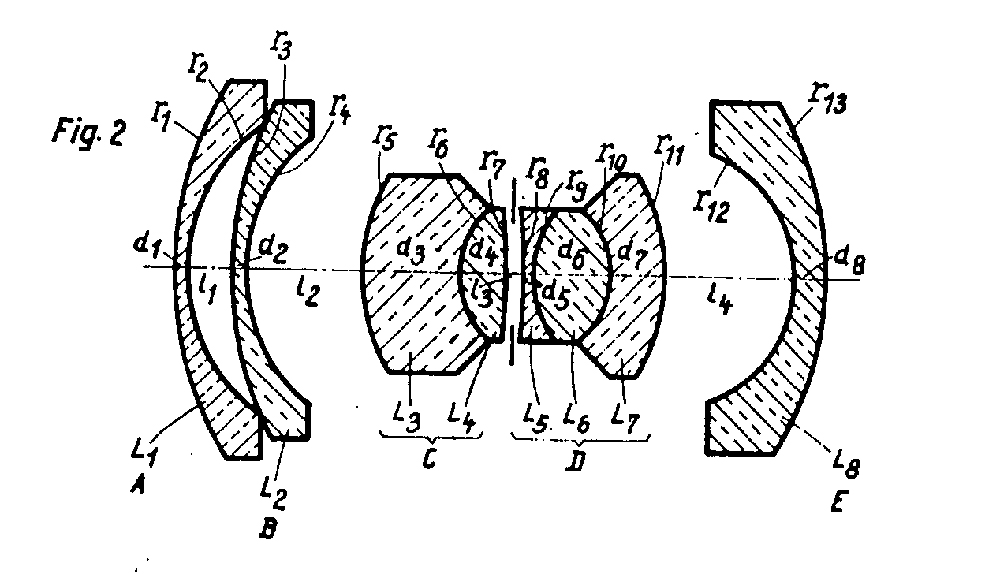
A good place to start with 21mm lenses is with the first ever mass produced — the Zeiss Biogon 21mm f/4.5 in Contax rangefinder mount. Up until the development of the 21mm, the widest available 35mm lens was the limited production 1951 East German Zeiss Jena 25mm f/4 Topogon — a pre-war design that did not reach production until after the war. The Zeiss Jena Topogon was extraordinarily expensive at the time. Both Nikon and Canon would produce their own Topogons — the 1953 W-Nikkor 25mm f/4 and the 1956 Canon 25mm f/3.5. Today, both the original 25mm Zeiss and Nikkor lenses are extremely rare collectors’ items. The Canon 25mm is still relatively affordable and more widely available.
The history of the development of the 21mm Biogon is interesting. Rather than the Russians adapting a German lens design, here the Germans took inspiration from the Russians. The short version is that in 1946, Russian optical designer Michail Rusinov finally patented a design for symmetrical super wide angle with a relatively wide aperture with excellent corner illumination. Dr. Ludwig Bertele, working for Zeiss (West Germany) at the time, used this innovative design as a blueprint for what would eventually become the Biogon.
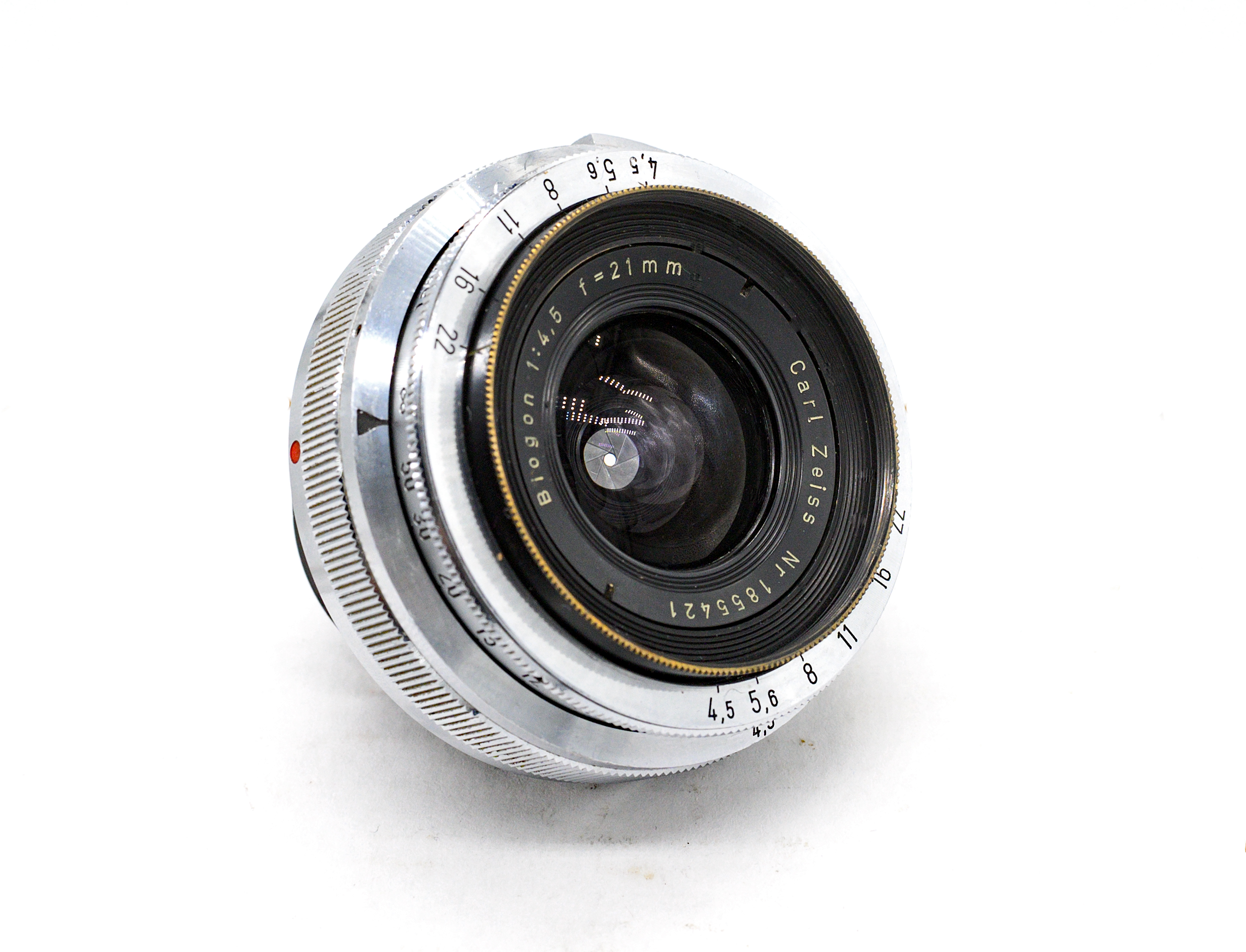
Produced from 1954 to 1961 exclusively in Contax rangefinder mount, with an optically-identical mirror lock-up Contarex SLR version being produced well into 1960s, the Biogon was the first commercially-available 21mm lens for 35mm cameras. In 1958, Leica introduced its first generation Super Angulon 21mm f/4. Nikon would follow in 1959 with the Nikkor-O 21mm f/4 (another hopelessly rare and expensive collectors’ item). Although its date of introduction is not entirely clear, it appears that in 1956, the Soviets produced its non-rangefinder-coupled Russar 20mm f/5.6 in Leica screw mount, which was produced in various iterations into the 1990s. Recently, Lomography commissioned the re-launch of a “Russar+” (still not rangefinder-coupled), which still remains available for purchase.
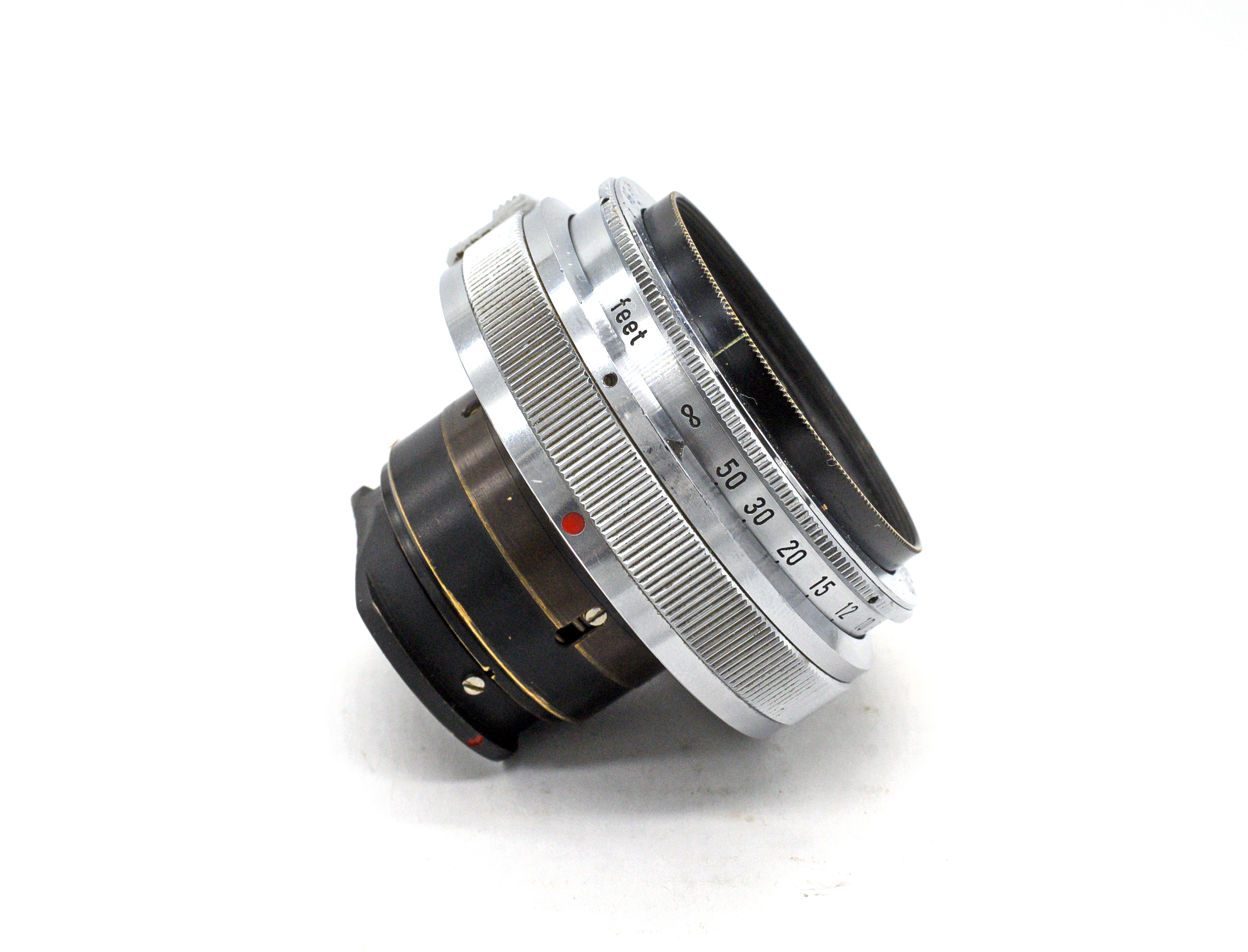
Although the Biogon was designed for the Contax rangefinder system, the lens will mount and is “close enough” in focusing to use on Nikon rangefinder cameras. The Biogon has a “flare shield” loosely screwed into the rear element housing that can be removed pretty easily. The Biogon will adapt perfectly to digital mirrorless cameras with the appropriate adapter. The Biogon will also reportedly work fine on the Voigtlander Bessa R2C and R2S if the flare shield is removed. Unfortunately, the Biogon will not mount to any OEM or aftermarket Leica M camera body with any currently-available adapter — the rear element housing contacts Leica’s rangefinder mechanism and there is no present way around it.
The Biogon came with a dedicated non-parallax corrected external viewfinder. The viewfinder does not win any awards, but it works. It is not clear if a dedicated lens hood exists. The Biogon is a rather heavy, but an absolutely gorgeous lens. The MTFs are very impressive for a 1950s lens and can be found here (these are the MTFs for Contarex version but it is the same lens).
1979 Yashica ML 21mm f/3.5
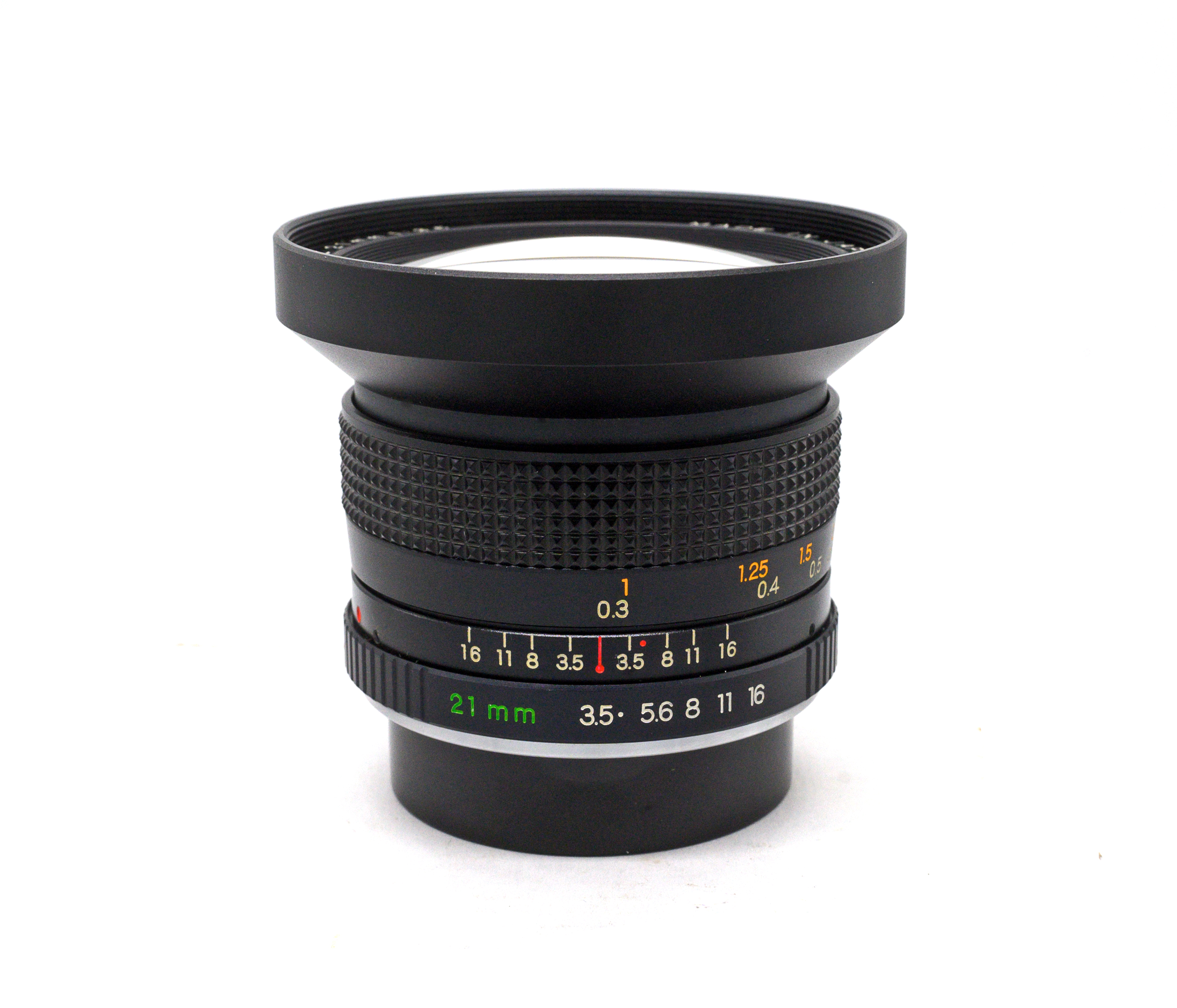
Specifications
Mount: Contax C/Y
Optical Design: 12 elements in 8 groups
Aperture: f/3.5 – f/16 click stops
Aperture Blades: 6
Minimum Focus: 0.3 meter
Filter Size: 72mm
Weight: 370g
Lens Design
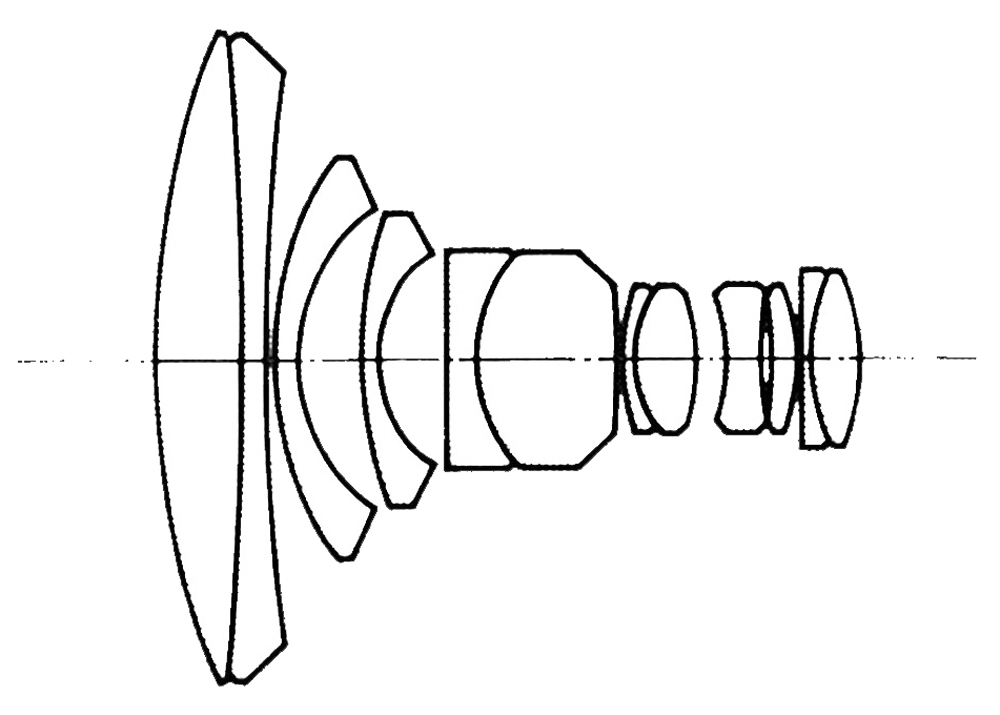
The first generation of 21mm lenses for SLRs was simply adapted rangefinder lenses. Because the rear lens housings of rangefinder 21mms would interfere with an SLR’s mirror, the first generation could only be used if the mirror was “locked up.” As a practical matter, because one could not use the mirror, the lenses would have to be used with external finders and scale-focused only. Examples of these mirror lock-up lenses included the Nikkor-O 21mm f/4, the Contarex 21mm f/4.5, the Minolta 21mm f/4. the Yashica 21mm f/3.3, and the first generation Leica Super Angulon 21mm f/4. There were other mirror lock-up lenses made even wider than 21mm. Needless to say, on an SLR, these lenses were not very practical at the time and are not particularly popular today.
To fully adapt super wide angle lenses to SLRs required a different type of lens design — one that would place the rear lens elements well in front of the mirror. It would not be until the mid-1960s that the second-generation “retrofocus” lenses emerged. This included the Nikkor-UD 20mm f/3.5, the Konica AR 21mm f/4, and the Leica Super Angulon-R 21mm f/4. These lenses all shared a suspiciously similar external design as well as mostly took large 72mm filters. By the late 1970s, a “third generation” of 21mm SLR lenses began to emerge — slightly faster (f/2.8), more compact, and taking the normal-sized filters for the camera system.
As the well-documented story goes, at the end of its rope with its flailing Contarex SLR line, Contax (West Germany) partnered with Yashica (Japan) early 1970s to produce a new SLR system under two brands that would share the same lens mount (“C/Y”). The first camera body produced under the joint venture would be the 1975 Contax RTS followed by the Yashica FX-1 and Yashica FR.
At launch, the RTS promised to be a full professional system. Contax offered a number of retrofocal super wides — a 15mm f/3.5, 16mm f/2.8, and a 18mm f/4 (with the 16mm and 18mm designs being carry-overs from the Contarex era). Contax would not produce a native C/Y-mount 21mm f/2.8 until the 1994, very late in the game. Needless to say, the Contax 21mm Distagon is extremely sought after today and is now often a $2,000+ lens, with well-used examples selling for far more than used modern Zeiss ZE or ZF 21mm lenses. I’m sorry, but no film-era 35mm prime SLR lens is worth $2,000 for those who shoot, rather than collect.
It would not be until 1979 that Yashica would produce a 21mm lens in C/Y mount. It has both the design and features of a “second generation” 21mm SLR lens. According to an interesting write-up, Yashica used the 1968 Leica R 21/4 Super Angulon as its inspiration. The original clamp-on rectilinear lens hood for the Yashica is difficult to find, but any of the hoods designed for the 72mm generation of 21mm lenses should work — like the HN-9 for the Nikon-UD 20mm f/3.5.

The ML 21mm lens has remained popular and somewhat pricey because it remains the best and only OEM alternative in native C/Y mount to the expensive Contax 21/2.8. There is also some indication that Yashica did not produce that many copies.
1979 Konica AR Hexanon 21mm f/2.8
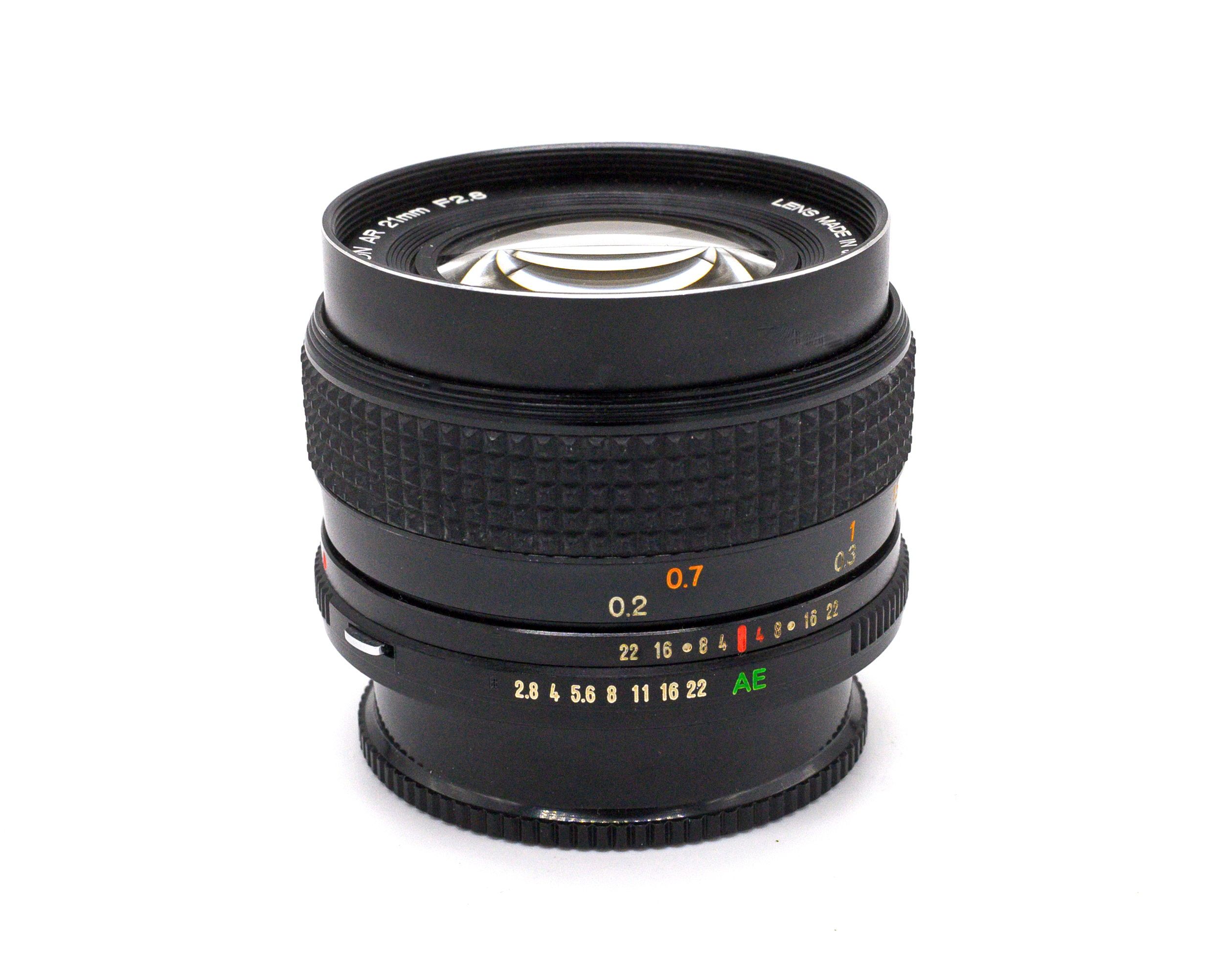
Specifications
Mount: Konica AR
Optical Design: 9 elements in 8 groups
Aperture: f/2.8 – f/22 click stops
Aperture Blades: 6
Minimum Focus: 0.2 meter
Filter Size: 55mm
Weight: 215g
Lens Design
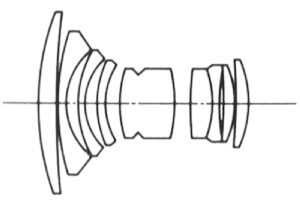
During the 1960s and 1970s, Konica’s primary reputation in the photography world was as an above-average lens designer. Although Konica would never produce a truly professional 35mm camera body, its lens designs were ahead of the general curve until the late 1970s.
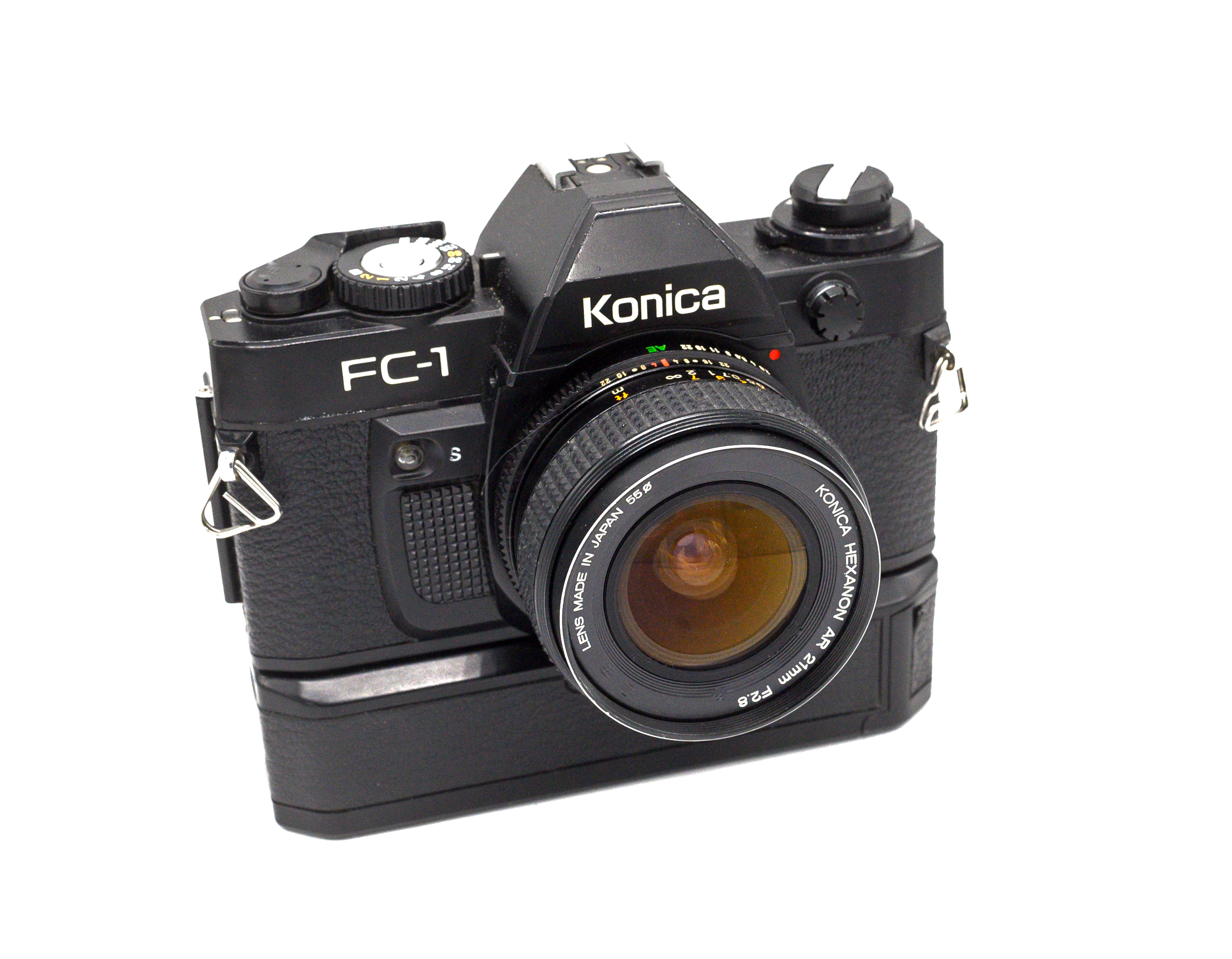
One of the hardest to find Konica AR lenses is the 21mm f/2.8. Like many of the late 1970s and 1980s Hexanon lenses, the 21mm was produced for Konica by Tokina. The Hexanon can be classified as a “third generation” 21mm SLR lens, redesigned from Konica’s 1965 21mm f/4, packaged in a smaller barrel, and using Konica’s standard 55mm filter thread. What is remarkable about the Hexanon is the ability to focus down to 0.2 meters. Because of its rarity and corresponding price, not much is objectively known about the performance Hexanon other than a few glowing user perspectives.

2002 Konica M-Hexanon 21-35mm f/3.4-4 (Leica M)
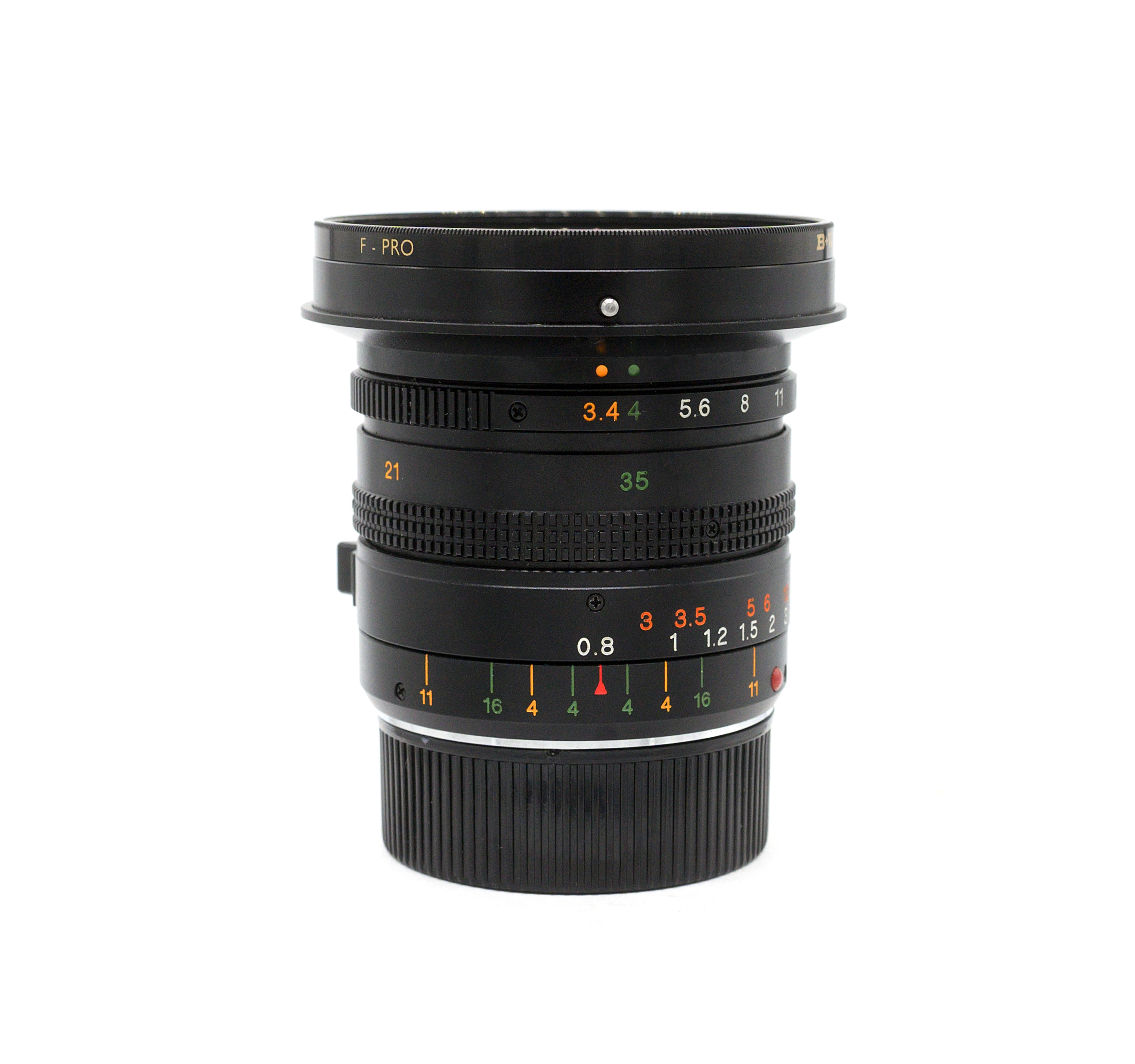
Specifications
Mount: Leica M
Optical Design: 11 elements in 10 groups
Aperture: f/3.4 (21mm) f/4 (35mm) – f/22 click stops
Aperture Blades: 10
Minimum Focus: 0.8 meter
Filter Size: 62mm
Weight: 295g
Lens Design
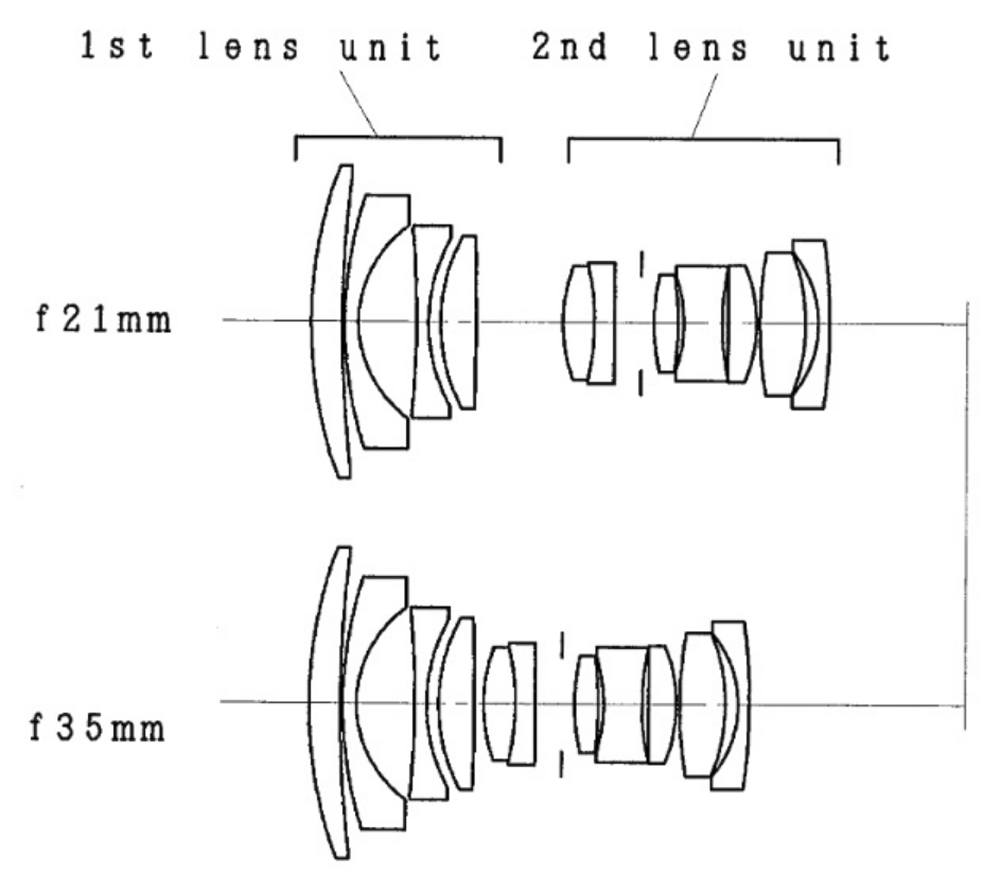
In 1999, Konica introduced its excellent Hexar RF camera that, in a way, helped usher in the present revival of rangefinder photography. Since the discontinuation of the Canon rangefinder system in the early 1970s, the only other non-Leica rangefinder was the 1980 Minolta CLE. During the 1990s, Konica made small runs of Leica screw mount lenses — a collapsible 50mm f/2.4, a 35mm f/2, and a 60mm f/1.2. At the launch of the Hexar RF, Konica introduced three brand-new lenses in Leica M mount — a 50mm f/2, a 28mm f/2.8, and a 90mm f/2.8. It would later add a limited edition 50mm f/1.2 and a 35mm f/2. However, the Hexar RF system would not be long for the world as Konica would soon merge with Minolta and then disappear forever into a Japanese conglomerate.
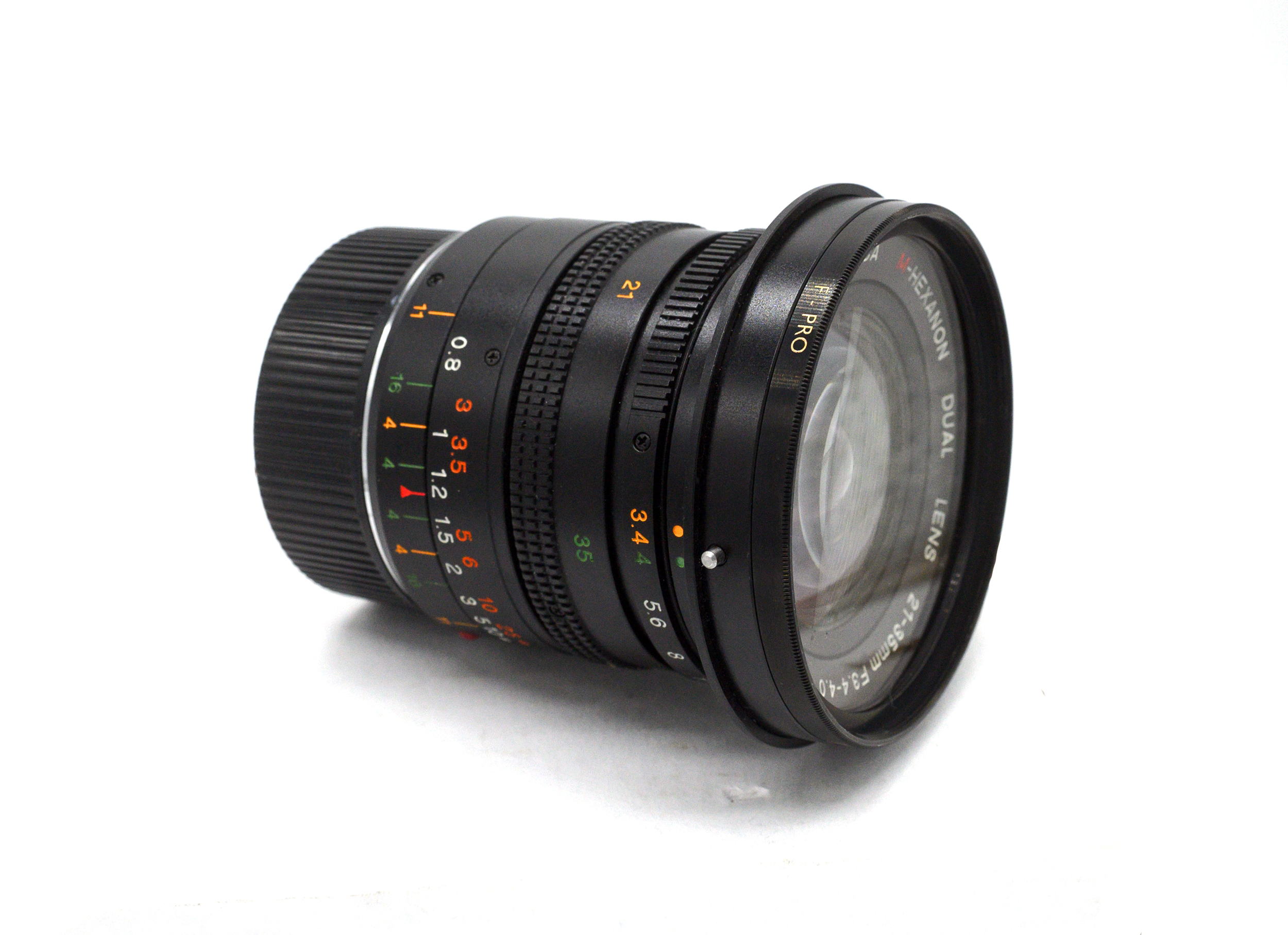
The arguably premiere M-Hexanon lens most likely is the 2002 21-35mm f/3.4-4. The idea of a multi-focal length rangefinder lens has its origin with the 1998 Leica 28-35-50 f/4 Tri-Elmar. Although the Konica 21-35 did not appear to sell well during its run, folks are now appreciating how useful the lens is — perhaps the ideal travel lens. It is a wonderfully sharp lens at both 21mm and 35mm has and an advanced, complicated design. As you can see above, the middle and rear lens groups shift back and forth to effectuate the focal length shift — this is pretty much the same operation as the Leica Tri-Elmar. Focusing is completely internal, so the lens does not physically move with the focus.
The M-Hexanon is a larger lens that tends to block the viewfinder on the 35mm frameline for most Leica M rangefinder cameras. What is very interesting is that on a digital system, the lens can actually continuously zoom and focus throughout its range (although the intermediate focusing will not be accurate on using rangefinder focus). It came with a dedicated external finder displaying 21mm and 35mm framelines as well as a square bayonet-style rectilinear lens hood.
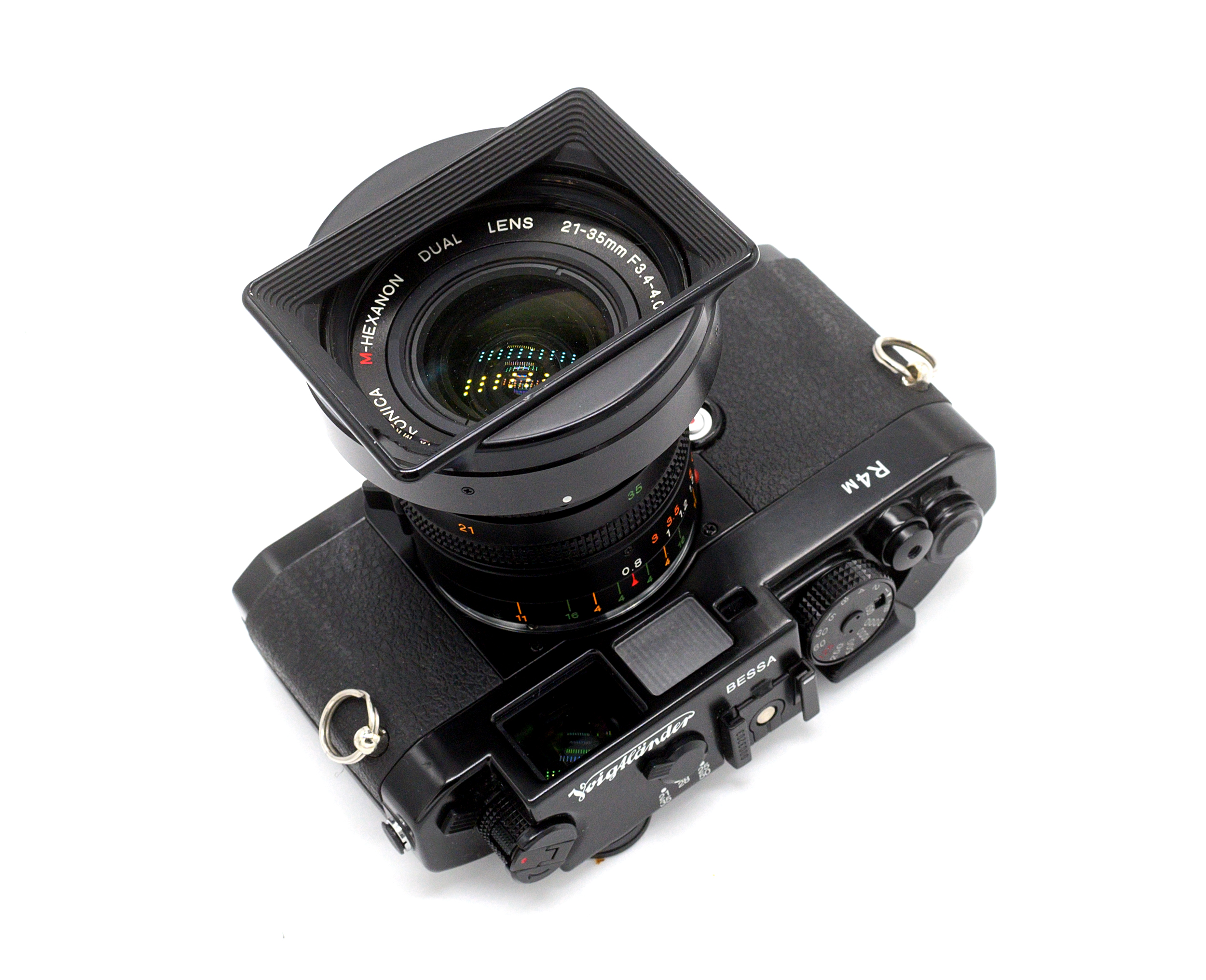
The only publicly-available MTFs for the 21-35 at 21mm and f/3.4 and 35mm and f/4 are pretty good — but not earth-shattering. However, at 35mm at f/4 the original Leica 28-35-50 Tri-Elmar clearly surpasses the Konica. At 21mm, the current Leica 16-18-21 f/4 Tri-Elmar also bests the Hexanon. However, it must be remembered that the M-Hexanon cost around $1,000 new with an included hood, finder, and cases, while a used original 28-35-50 Tri-Elmar is, on a good day, a $2,800 lens and the 2006 16-18-21 costs over $6,000 — and neither of the Leica lenses include a finder.
2004 Zeiss C Biogon T* 21mm f/4.5 (Leica M)

Specifications
Mount: Leica M
Optical Design: 8 elements in 6 groups
Aperture: f/4.5 – f/22 click stops
Aperture Blades:
Minimum Focus: 0.5 meter
Filter Size: 46mm
Weight: 190g
Lens Design
In 2004, Zeiss introduced a brand-new 21mm f/4.5 in Leica M mount. Although marketing it as the spiritual successor to its original 1954 Contax rangefinder lens, it has nothing in common with it from a design perspective. The 21mm f/4.5 Biogon is also a completely different design from the 1990s Contax G 21mm f/2.8 and the current ZM 21mm f/2.8.

The MTFs for the Biogon are off the charts with very, very little distortion. From the data sheets, the f/4.5 version is a better performer than current Zeiss ZM 21mm f/2.8 and the Leica 16-18-21 at 21mm. The usual internet commenters have raved about it. For digital users experiencing “color fringing,” check this out. Comparing the MTFs against the current Leica 21mm f/2.8 ASPH, the Zeiss lens has far less distortion but the Leica appears to edge out it out in overall performance — but not by much and not in a way you could notice. However, despite possibly being one of the best 21mm camera lenses ever produced, the f/4.5 version has been discontinued but remain a tremendous value on the used market.
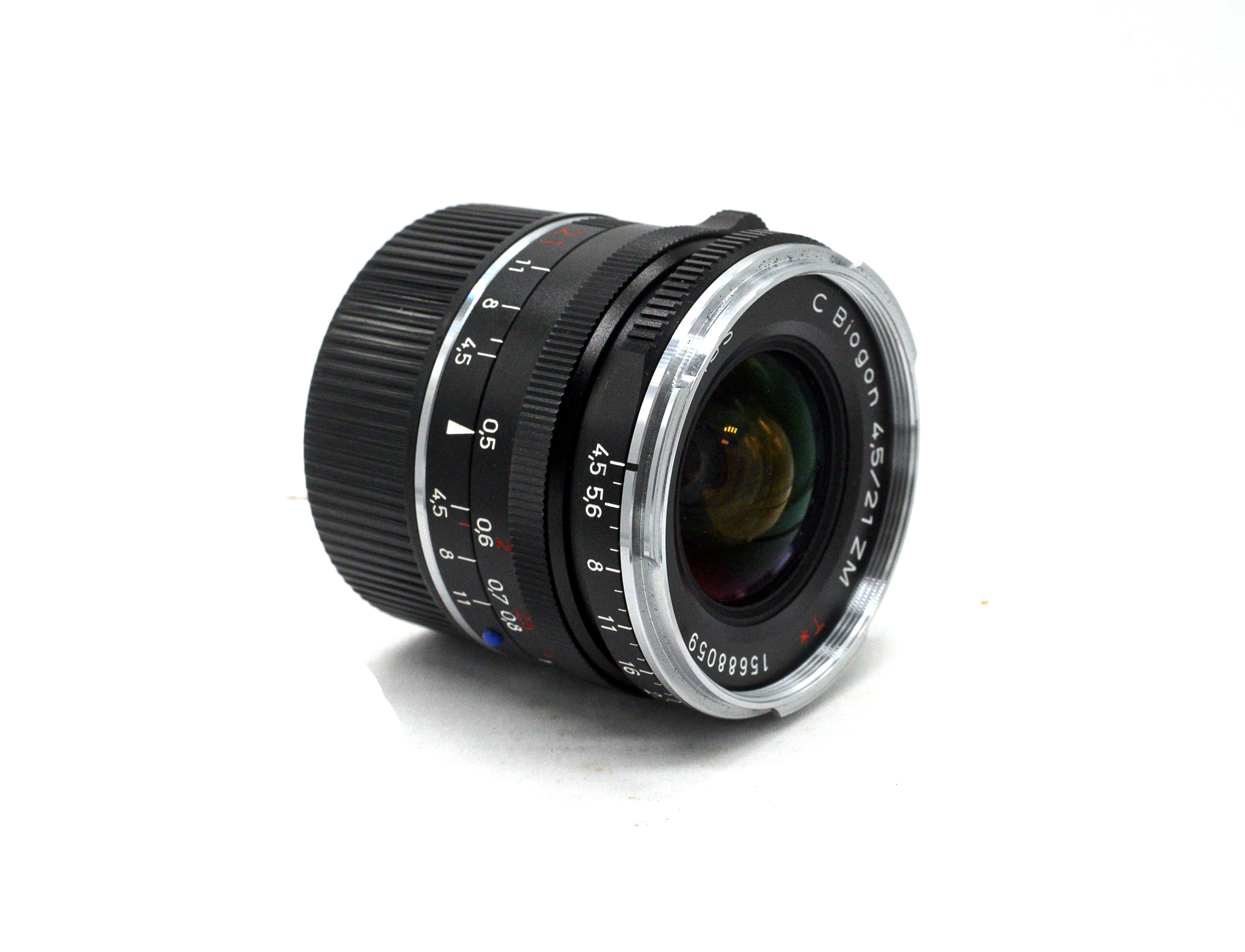
Although the lens has the typical Zeiss provision for a bayonet-style lens hood, it does not appear that one was made. However, there are numerous quality aftermarket hoods for the 21mm Biogon. Zeiss also offers a separate 21mm accessory viewfinder — the ZL-21, which is fairly expensive. Any 21mm finder should do.
Rangefinders Versus SLRs
I prefer to use lenses wider than 28mm on SLRs rather than rangefinders. There are a few reasons for this.
SLR Lenses Can Focus More Closely: In general, SLR lenses can focus down to much closer distances than rangefinder lenses. A traditional Leica M rangefinder’s closest focusing distance is 0.7m. SLR 21mms can focus down to 0.3m and in some cases 0.2m. This makes quite a difference with how versatile a 21mm lens can be.
External Rangefinder Viewfinders Are Not Entirely Accurate: With SLRs, what you see through the viewfinder is basically what you get. With rangefinders, super side angle lenses require the use of external, shoe-mounted viewfinders. These viewfinders are not only not entirely accurate in themselves, but also sit above the actual viewing area of the lens itself — which leads to inaccurate framing. While some of these viewfinders have etched parallax lines for close focusing distances, that is not a great substitute for the real thing. External viewfinders also do not provide an accurate representation of the field curvature of the lens — for instance, the viewfinder will show a “flatter” and “closer” image than the lens will produce. Of course, the pricey Leica Universal Viewfinder can solve many of these issues — however, it still sits above the actual view of the lens. The only Leica M rangefinder camera that works “ok” with 21mm and 25mm lenses is the Voigtlander Bessa R4A and R4M — which provides parallax-corrected framing at the correct lens level.
Lens Tests
Before getting started with this, the usual caveats apply. None of these lenses were designed for digital mirrorless cameras. Film is a much different medium from a digital sensor as the former has thickness and a slight curvature. Although many people use their mirrorless cameras to evaluate film-era lenses, it still not clear that a digital sensor is an adequate gauge of performance on film. However, digital sensors definitely and accurately gauge how film lenses perform on digital.
These tests were taken on a Nikon Z6 on a tripod at either 200 or 100 ASA with all automatic corrections turned off and a quick white balance in Photoshop. Also, it is somewhat difficult to precisely focus 21mm lenses on a Z6 because the viewfinder zoom function does not get close enough to the subject and these lenses have large depths of field anyway. Thus, we are not looking for pixel-peeping sharpness so much here as for light fall-off, coma, flare, field curvature, and distortion. The Z6 can adequately gauge lenses on these metrics. Click on the images below for a 4500 pixel view.
Distortion
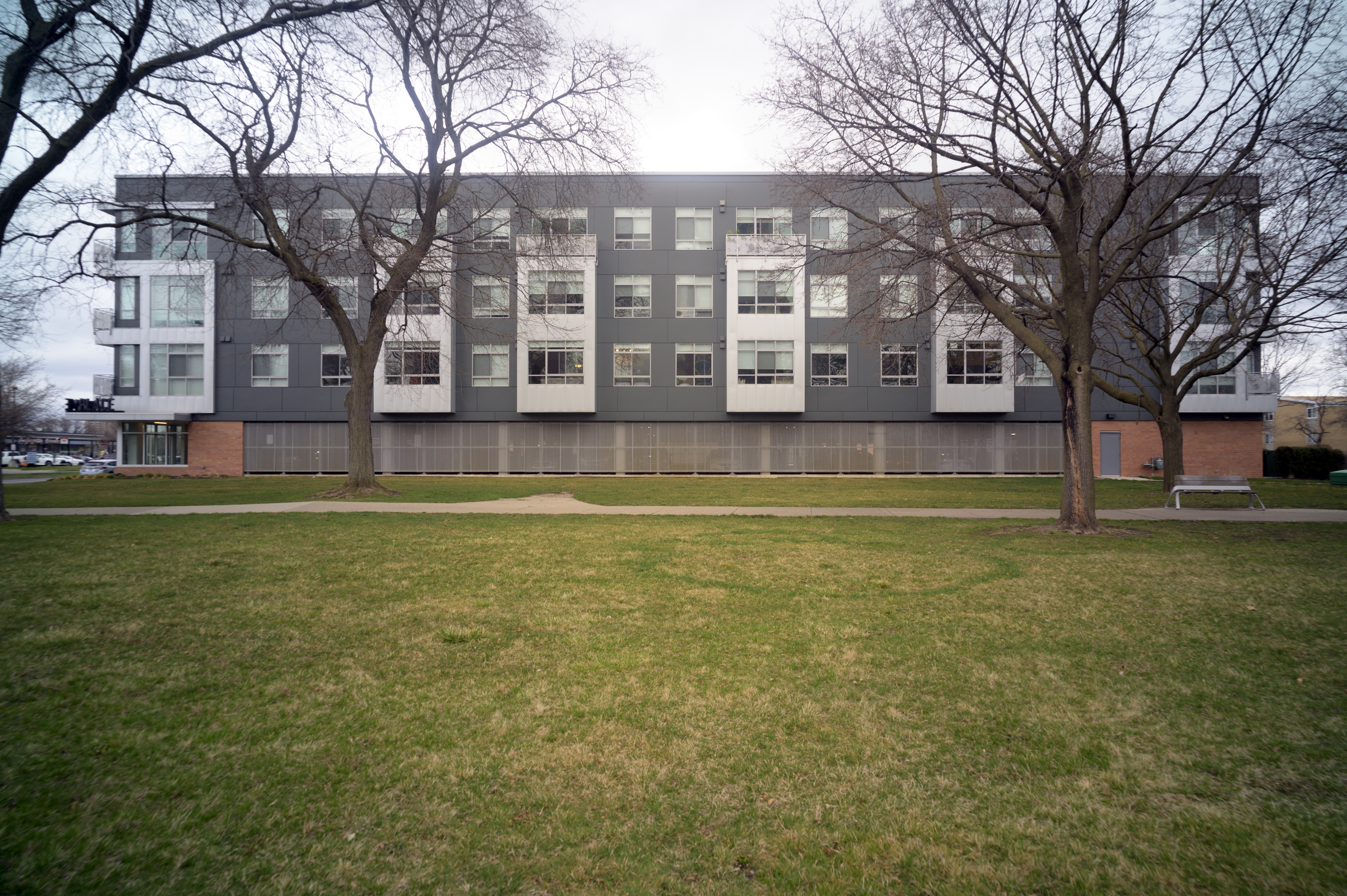
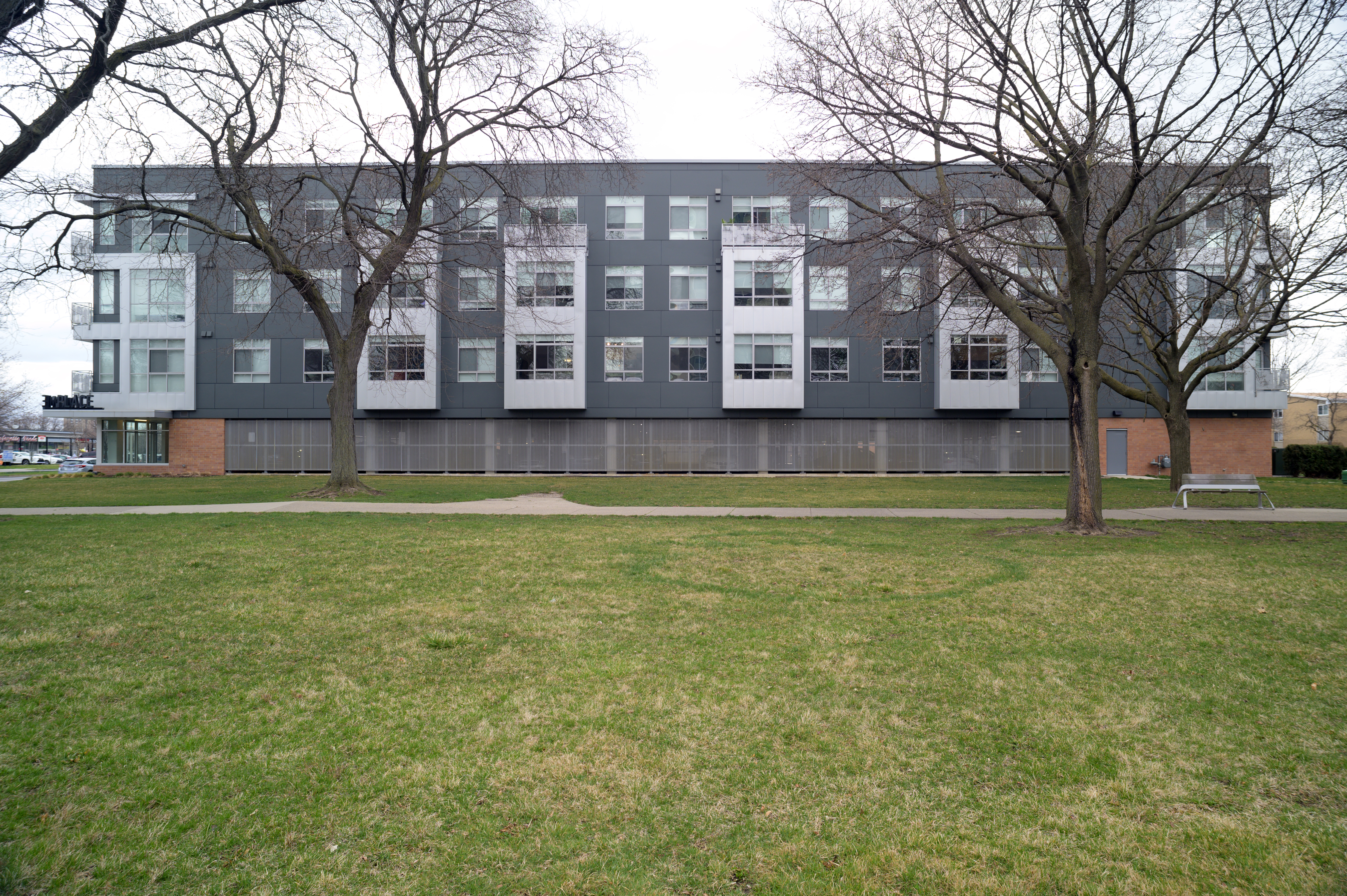
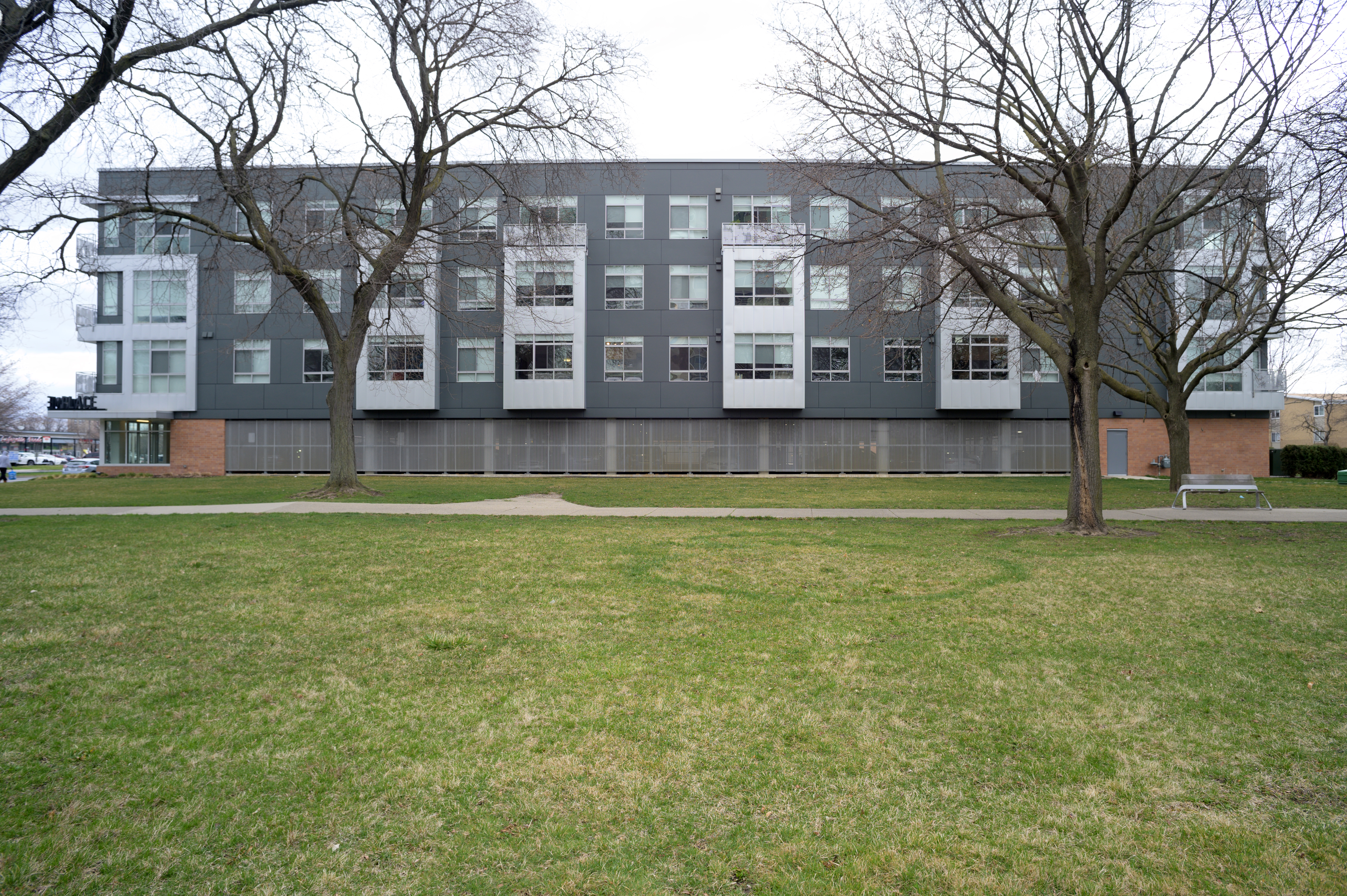
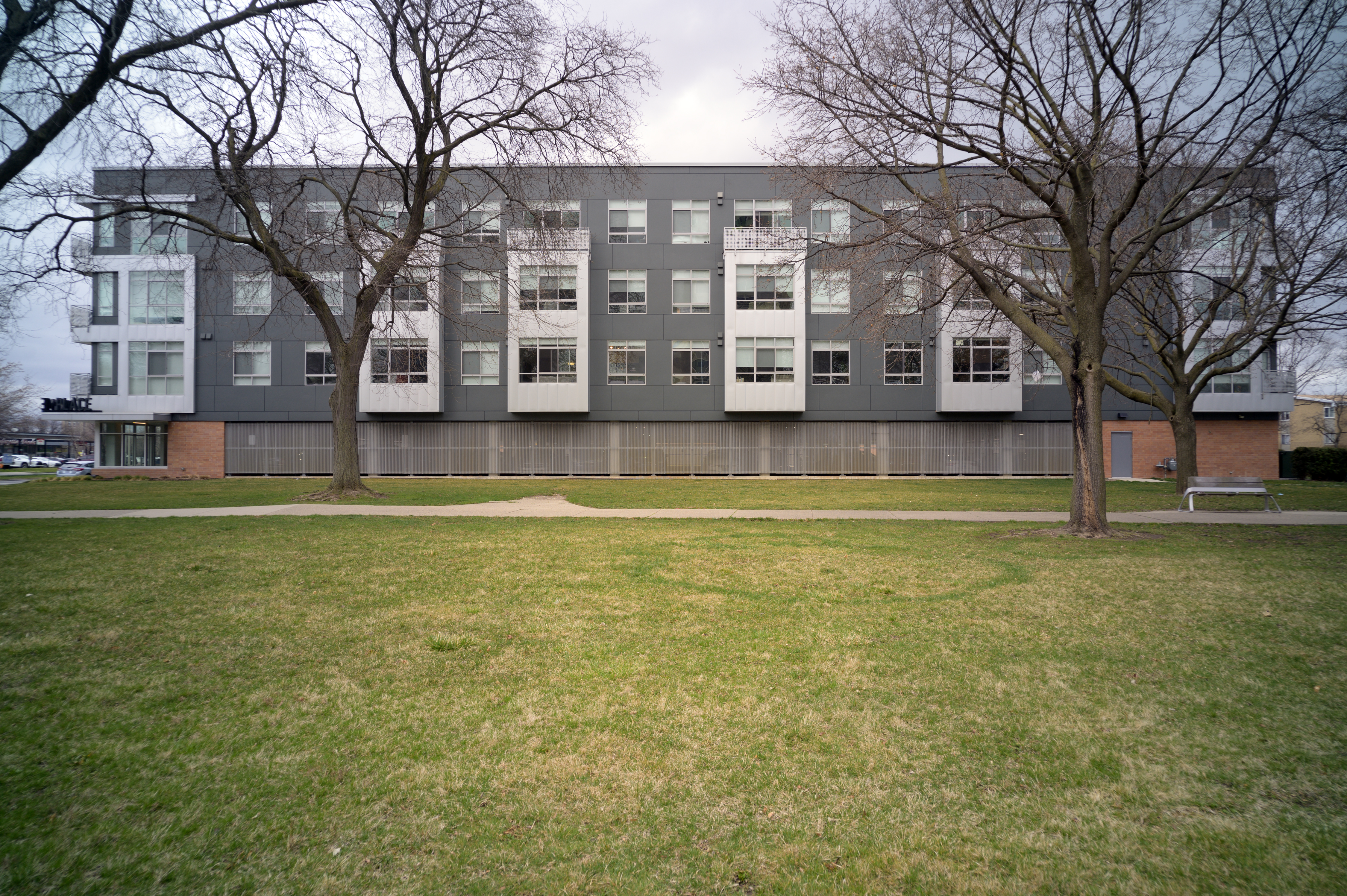

Biogon 21mm f/4.5: The Biogon remains an impressive optic nearly 70 years later. While relatively heavy, the Biogon is a somewhat difficult lens to use on digital because its incredibly long focus throw requires more effort to focus it precisely (which of course is not an issue for Contax and Nikon film rangefinders). The Biogon’s aperture selection is also rather cumbersome because it is on the front of the lens. True to its reputation, the Biogon has really impressive distortion control. There is a fair bit of corner light falloff at wider apertures. As with all other 1950s lenses, the Biogon’s single lens coating permits a bit of flare and resulting loss of contrast. Also, the 1.00m closer focusing distance limits its versatility. Because performance peaks at f/11, I would suggest aiming to shoot at that aperture for hyperfocal subjects.
Yashica ML 21mm f/3.5: The Yashica’s performance is about as good as it gets for an older SLR 21mm. Shots are normal apertures are as about a sharp as you need. However, the Yashica not only suffers from some barrel distortion, but more importantly, some “wavy” distortion that is not easily corrected. You can correct for the barrel distortion, but then the horizontal lines towards the edges will still bow outwards towards the viewer. There is a little color shift on digital at f/3.5, but it soon goes away.
Konica AR 21mm f/2.8: The AR performs pretty well for a f/2.8 21mm 1970s lens. It is compact, uses a smaller filter size, easy to use and to focus on digital. At f/2.8, the performance is usable but not great — there is a distinct color shift on digital and there appears to be some pretty noticeable flaring. However, at f/4, the lens is light years ahead, and by f/8-11, it is at its peak. The AR exhibits more barrel distortion than the Yashica, and also has similar “wavy” distortion.
Biogon ZM 21mm f/4.5: This Biogon is really easy to use and easy to focus on digital. The lens is sharpest of the bunch. There is very slight barrel distortion that is easily corrected and does not have any “waviness.” The modern Zeiss lens coatings control flare very well and everything is sharp. The Biogon is overall the best of the lenses looked at here.
Konica 21-35mm f/3.4-4: Although quite large for a rangefinder lens, the Konica is very easy to use and focus on a digital camera. The Konica is also a sharp modern optic. It has more barrel distortion than the new Biogon, but it is also of the easily-correctible type. However, the Konica does suffer from one phenomenon not experienced by the other lenses on the list — noticeable focus shift. While I have not noticed any obvious effect on film, this is not an issue on digital mirrorless cameras with real-time focus.
Conclusions
What separates a good from a great 21mm lens is: (1) distortion control; and (2) a close focusing ability. Even if a 21mm lens does exhibit barrel distortion, as long as it is the type that is easy to correct, it is not a big deal. While a 21mm lens is not a substitute for a perspective control lens for critical applications, it can work in a pinch. The five lenses looked at here are all very good, yet different. Like most 21mms, they all hit their peak at f/8 or f/11. They all have noticeable light fall-off at wider apertures. While the SLR lenses can focus much more closely, both the Yashica and the Konica (along with many other 21mm SLR lenses) both exhibit hard-to-correct “wavy” distortion. The Biogons both have excellent distortion correction and the Konica Dual has some barrel distortion, but is easily correctible.
21mm lenses are rarely cheap, and the prices for these lenses today do not necessarily reflect their performance, but their relative rarity: Original Biogon ($700+), Yashica ML ($300-400), Konica AR Hexanon ($300-500), Biogon ZM (@ $500-700), and the Konica Dual ($2,000+). For dual film and digital use, the ZM Biogon is probably the best bang for the buck. Of course, there are many other alternatives out there not looked at here.
Zeiss 21/4.5 ZM uses the same round bayonet hood as the Zeiss 25/2.8 ZM.